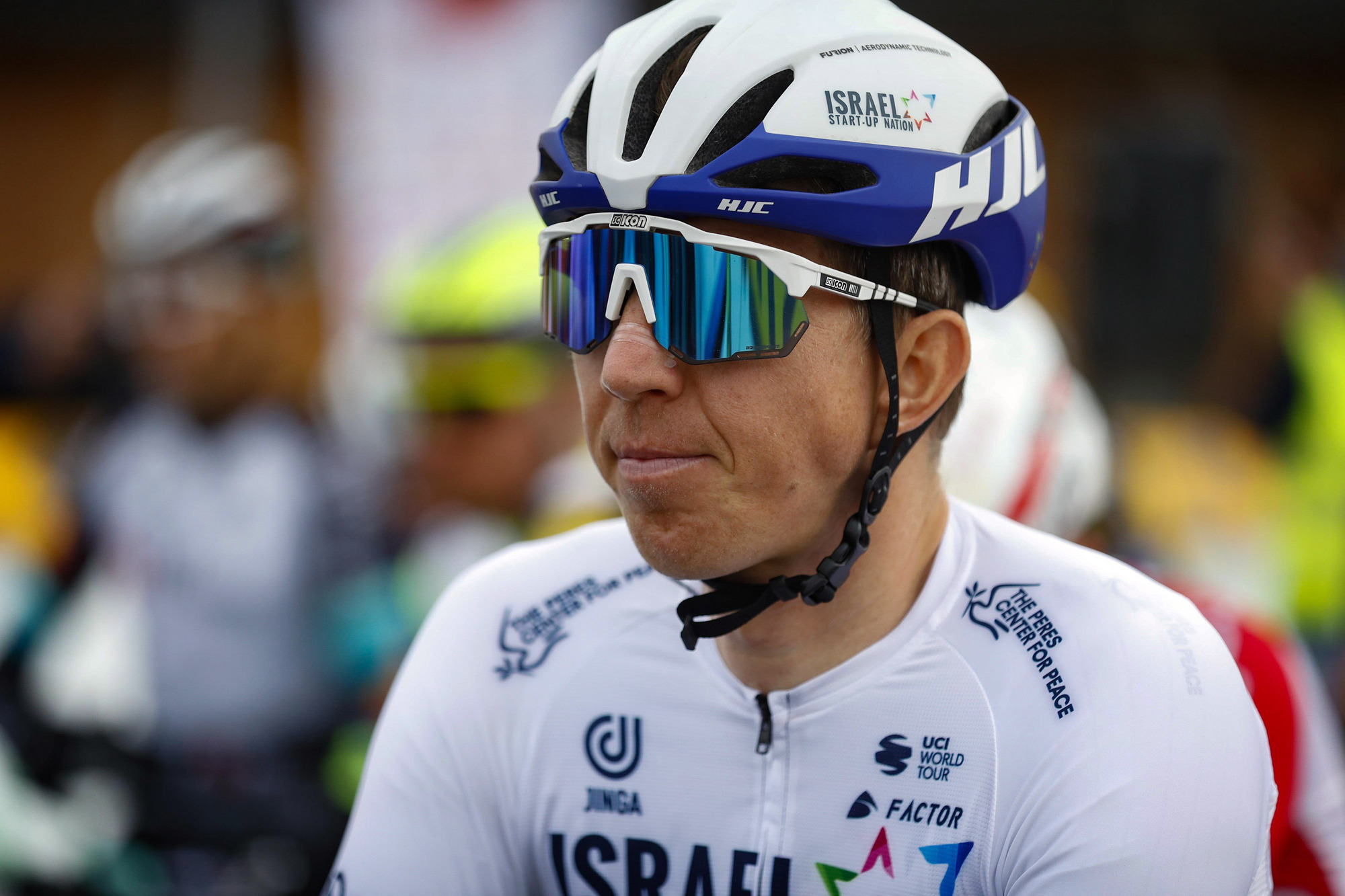Omloop Het Nieuwsblad comes too soon for Sep Vanmarcke
Off-season knee injury means Belgian has done 50 days less training

Exactly a decade has passed since a youthful Sep Vanmarcke pulled off the Classics heist of the year at Omloop Het Nieuwsblad and out-sprinted Tom Boonen and Juan Antonio Flecha for a breakthrough victory.
Both Boonen and Flecha have long since hung up their wheels, while Vanmarcke has steadily established himself as a stalwart of cobbled Classics racing, with his fourth top three finish in Omloop Het Nieuwsblad coming as recently as last year.
This time round, the 33-year-old Israel-Premier Tech rider admits to Cyclingnews that his chances on Saturday in Ninove are limited.
“I had a pretty bad winter with a left knee injury. We had to work off the bike a lot and I only did my first half-hour ride on December 20th,” Vanmarcke revealed to Cyclingnews.
“I’ve had a lot of setbacks compared to other years, I’ve done 50 days less training and I still need some extra time.”
On the plus side, Vanmarcke found the recent Ruta del Sol to be ideal way of working on his Classics form thanks to the hilly, mostly short, stages.
“I’m quite happy with how it’s been going in the race, I can follow the guys on the climbs already. But I haven’t done specific work yet. So I think I’ll try my best at Omloop but I won’t be at my best shape,” he said.
Get The Leadout Newsletter
The latest race content, interviews, features, reviews and expert buying guides, direct to your inbox!
Even so, one of the last appeals of Omloop Het Nieuwsblad is that riders' uncertainty of their early season form means the race rarely follows a script, and Vanmarcke, for one, is not throwing in the towel before the game is over.
“You never know in Opening Weekend, a lot can happen,” he suggested.
“Of course I’ll try my best. I’m looking more at the second part of the Classics to go for the big races, though, that’s more realistic to get my top shape.”
With that in mind, Vanmarcke is sticking to a pre-season plan of scrapping Tirreno-Adriatico or Paris-Nice next week in favour of a training camp at altitude on Mount Teide for “specific training work.”
“It’s true that when you do a race you get race intensity, but it’s the peloton that decides how you train,” he argued.
“Now we can decide for ourselves, depending on how I feel every day.”
Following his training camp at altitude, it’s back into the Classics battle, with Vanmarcke ticking off his race sechedule the Opening Weekend to Cyclingnews.
“Nokere, Milan-San Remo and then we’re already there. Fortunately, I already know I don’t need a lot of races to be good if I train well.”
One unexpected piece of luck for Vanmarcke is that Paris-Roubaix comes an extra week after the Tour of Flanders this April. All the Classics riders are trying to get their heads around staying on top of their one-day game for an extra seven days. In Vanmarcke’s case, the prolonged Classics campaign is not necessarily a bad thing.
“It’s more of a mental challenge than a physical one. If it’s one week you get through that easily, but if it’s two weeks, you have to keep training and have to keep the focus for 14 days. That’s a bit harder,” he reflected.
“So maybe in that way, if having that injury was never a good thing, my late build-up could end up having its advantages late into April.”
Alasdair Fotheringham has been reporting on cycling since 1991. He has covered every Tour de France since 1992 bar one, as well as numerous other bike races of all shapes and sizes, ranging from the Olympic Games in 2008 to the now sadly defunct Subida a Urkiola hill climb in Spain. As well as working for Cyclingnews, he has also written for The Independent, The Guardian, ProCycling, The Express and Reuters.
